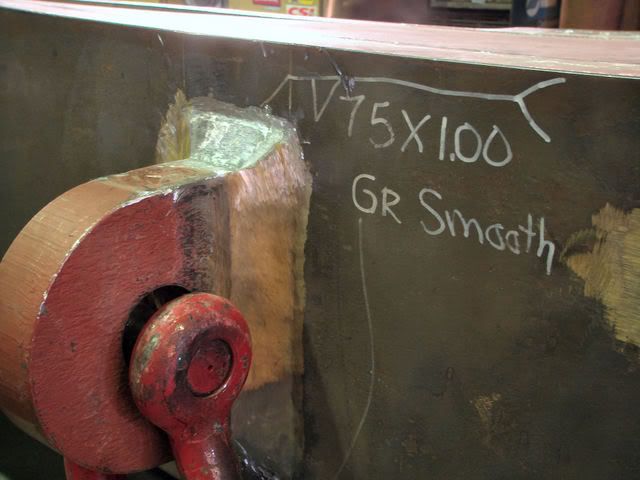Many Possibilities here. Some thoughts
1) If this is a "repair" on something that was used as a lifting device that developed the need for repair after being in service I would proceed with MUCH caution. Find the engineer or designer.
2) On thick sections a filler metal with higher strength than the base metal increses the possibility of underbead cracking as the result of residual stress.
3) Preheat on a 6" thick section with torches could be hard to maintain.
4) Post weld Heat Treatment could be something to look into. A 6" thick piece of carbon steel would often times be stress relieved after welding.
5) A root opening or crush wires can reduce residual stress.
6) Any repairs should be performed only after making sure the underlying defect is gune. MT/PT or possibly UT could be helpful.
Again, I would consult some higher athorities regarding anything with the word LIFTING in it.
Have a nice day
Gerald Austin
http://weldingdata.com/

